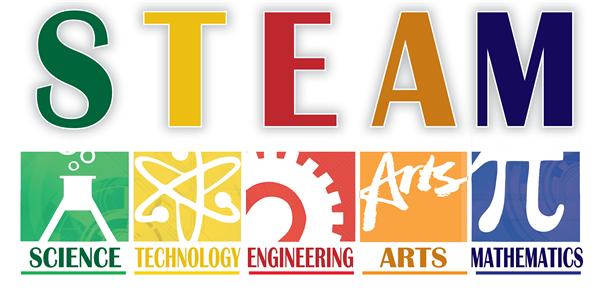STEAM 101 – WEEK 1 – Task 1
Account › Forums › STEAM Foundation › STEAM 101 – WEEK 1 – Task 1
-
AuthorPosts
-
-
May 5, 2025 at 11:32 pm #16759
 Campus 51Keymaster
Campus 51KeymasterUse the forum to discuss the following:
Based on this week’s readings and videos, create a list of key skills and habits of mind essential for establishing a true STEAM environment in your classroom.
Choose one skill or habit of mind from your list that can be developed across multiple subjects. In one paragraph, explain how this skill or habit of mind can be used to integrate two or more subject areas. Provide a clear example to support your explanation.
For example: One essential habit of mind that can be developed in mathematics and engineering is problem-solving. In a STEAM environment, problem-solving allows students to think critically and apply knowledge in creative and practical ways. In a mathematics lesson, students might learn how to calculate area and perimeter. In an integrated engineering task, they could use this knowledge to design and build a model playground that fits within specific spatial constraints. As students work through challenges such as fitting multiple equipment types into limited space or staying within a set budget, they apply mathematical calculations and engineering design principles simultaneously. This integration encourages students to approach problems from different angles, test solutions, and reflect on outcomes—an essential habit not just in STEAM, but in real-world contexts.
Read at least two responses from your peers and share your feedback by highlighting similarities and differences in thinking compared to your own approach.
-
May 6, 2025 at 3:49 pm #16814
 carolineselimParticipant
carolineselimParticipantKey Skills and Habits of Mind Essential for Establishing a True STEAM Environment
Problem-solving
Creative thinking
Collaboration
Perseverance
Systems thinking
Inquiry and curiosity
Flexibility and adaptability
Communication of ideas
Data analysis and interpretation
Design thinking
One essential habit of mind that can be developed across multiple subjects is creative thinking. In a STEAM environment, creative thinking encourages students to generate original ideas and approach tasks in innovative ways. For instance, in an integrated mathematics and visual arts project, students might study geometric transformations in math—such as rotations, reflections, and translations—and then apply these concepts to create tessellation-based artwork inspired by M.C. Escher. This not only reinforces their understanding of mathematical concepts through visual representation but also allows them to express mathematical patterns artistically. By combining logical precision with imaginative expression, students develop a deeper appreciation for how math and art can intersect, enhancing engagement and retention in both subjects.
In this integrated classroom activity, students will explore the connection between mathematics and visual arts by creating original tessellation artwork using geometric transformations. The lesson begins with an introduction to the concept of tessellations and a look at the work of artist M.C. Escher, whose art is rooted in mathematical principles. Students will review and apply key transformation concepts—translation, rotation, and reflection—using basic shapes like triangles, squares, or hexagons. Using creative thinking, they will modify these shapes into imaginative forms such as animals or abstract designs while preserving the mathematical rules of tessellation. Once their pattern is established, students will reproduce it across a surface to form a continuous design. They will then use color and artistic details to enhance their work, turning a geometric concept into a compelling piece of art. Finally, each student will present their artwork and explain the mathematical transformations they used, reflecting on how creativity and mathematical reasoning came together in the process. This activity fosters a deeper understanding of geometry while encouraging artistic expression, making math meaningful through visual storytelling.
-
May 10, 2025 at 1:46 pm #16916
 Bothaina EllymonyParticipant
Bothaina EllymonyParticipantThank you, Ms. Caroline, for sharing this example.
It’s very similar to how I see STEAM learning.
I also believe that creative thinking is important in all subjects, not just art. Like your tessellation activity, I like to mix subjects so students can see how ideas connect.We both ask students to explain their work and think about their learning, which really helps them understand better and grow more confident.
The main difference is where we start. You begin with a math and art idea, but I usually start with a real-world problem—like how to help the environment—and ask students to think of creative solutions.
We both use creativity, just in different ways. -
May 10, 2025 at 8:27 pm #16937
 Nahla YehiaParticipant
Nahla YehiaParticipantHi Caroline,
Thank you for sharing such a creative and well-structured example! I really appreciated your focus on creative thinking as a STEAM habit of mind. Like your students, mine also had opportunities to explore multiple disciplines through open-ended tasks, and I love how you used tessellations to bridge mathematics and visual arts. It’s such a powerful way to make abstract math concepts visible and meaningful.
While your post centered on design thinking and imaginative expression, my own approach focused more on curiosity and questioning as a starting point for integration. Both habits fuel inquiry-based learning, but where mine begins with students asking questions to explore ideas, your example shows how creativity can guide them to apply knowledge in new and expressive ways. I think both strategies highlight how STEAM learning empowers students to take ownership and see subjects not in isolation, but as parts of a connected, exciting whole.
Thank you for the inspiration!
-
-
May 10, 2025 at 1:36 pm #16915
 Bothaina EllymonyParticipant
Bothaina EllymonyParticipantKey Skills and Habits of Mind Essential for a True STEAM Environment:
• Curiosity and questioning
• Creativity
• Collaboration
• Critical thinking and problem-solving
• Communication
• Perseverance and resilience
• Reflection and metacognition
• Making connections across disciplines
• Observational skills
• Empathy and perspective-taking
Integrated Skill: Curiosity and Questioning
One essential habit of mind that can be developed across multiple subjects is curiosity and questioning.
Encouraging learners to ask thoughtful questions fuels deeper learning and naturally supports subject integration. For example, in a Year 4 unit on sound (Science) paired with music (Arts), learners might explore: “How do different materials change the sound we hear?” This question leads them to investigate vibrations and sound levels in science while experimenting with rhythm and tone in music. They might then build simple instruments from recycled materials (Engineering/Design) and even measure or compare sound levels using simple bar charts (Math). During our Science Fair on Monday May the 5th, learners modeled this beautifully- demonstrating how the volume of sound can depend on the strength of vibration and the material used. By framing lessons around open-ended questions sparked by learner curiosity, we create meaningful links between subjects and allow learners to take ownership of their inquiry.-
May 10, 2025 at 8:22 pm #16936
 Nahla YehiaParticipant
Nahla YehiaParticipantHi Bothaina,
I really enjoyed reading your response! I also focused on curiosity and questioning as a key habit of mind, and I completely agree that encouraging students to ask their own questions can lead to much deeper learning. Your example of integrating science and music through the sound unit is such a great way to make learning hands-on and meaningful. I especially liked how you extended the inquiry into design and math with the instrument-building and bar charts it’s a fantastic example of real STEAM integration.
One difference I noticed is that in my example, I explored systems thinking as the connecting habit across subjects. While your approach starts with student curiosity leading to cross-disciplinary learning, mine focuses on helping students see the relationships between parts of a system to understand the whole. Both approaches support critical thinking and inquiry, just from slightly different angles.
Thanks for sharing such a rich and inspiring classroom example!-
May 11, 2025 at 12:32 am #16938
 Bothayna emadParticipant
Bothayna emadParticipantWhat a thoughtful and well-integrated reflection! You’ve clearly demonstrated how curiosity and questioning can drive rich, cross-curricular learning experiences. I especially appreciate how you connected science, music, engineering, and math in a way that feels natural and engaging for learners.
-
-
-
May 11, 2025 at 12:37 am #16940
 Bothayna emadParticipant
Bothayna emadParticipantEssential Skills and Habits of Mind for a STEAM Classroom:
Curiosity
Observation and Inquiry
Creativity
Resilience
Problem-Solving
Collaboration
cooperation
Persistence
Reflection
Openness to New IdeasCreativity and Innovation is a powerful habit of mind that can be developed across multiple subject areas in Year 1 and is especially effective for integrating learning. For example, students can express creativity through a cross-curricular project that combines literacy and science. After learning about different animals and their habitats in science, students can create their own imaginary animal and write a short descriptive story or report about it in literacy. They can then design a model or drawing of the animal and its habitat using various art materials. This activity encourages imaginative thinking while reinforcing scientific knowledge about animal features and environments, and it supports language development through writing and storytelling.
-
-
AuthorPosts
You must be logged in to reply to this topic.

